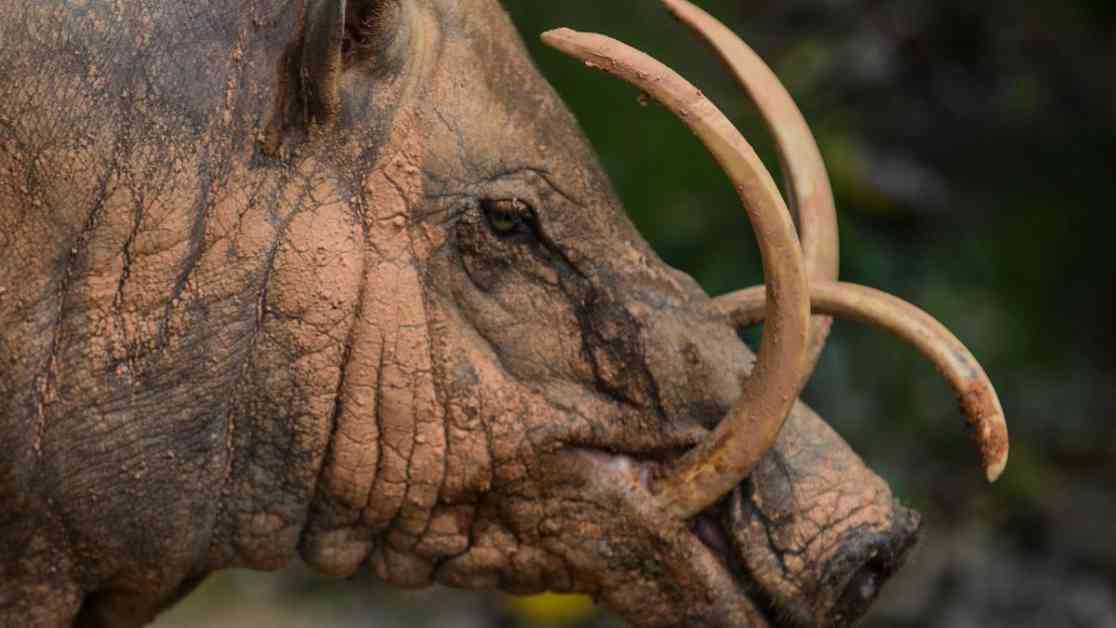Babirusas are fascinating creatures that belong to the pig family but have unique characteristics that set them apart from other pigs. They are known for their large upper canine teeth that grow in a unique way, curving back around and up through the top of the snout. These tusk-like teeth continue to grow throughout their lifetime, resembling antlers, which is how they earned the name “pig deer” in the Malay language. Babirusas are often referred to as “prehistoric pigs” due to their presence in cave drawings dating back nearly 40,000 years.
Male babirusas use their tusks not for fighting, as originally believed, but rather to attract females. These tusks are fragile and not suitable for combat, so males engage in a behavior of standing on their hind legs and boxing each other to establish dominance. Babirusas are unique in the pig family for their intricate, two-chambered stomachs, resembling the digestive systems of sheep. They use their hooves to dig for food and can also stand on their hind legs to reach fruit and leaves in trees.
Babirusas are native to the Indonesian islands of Sulawesi and neighboring areas, where they live in swamps in rainforests. They are around 2 feet tall, 3 feet long, and can weigh over 200 pounds. There are three known living species of babirusa, including the North Sulawesi babirusa, the Buru babirusa, and the Togian babirusa. A fourth smaller species, the Bola Batu babirusa, is believed to be extinct.
These unique creatures are believed to have diverged from their pig ancestors between 26 million and 12 million years ago, potentially due to isolation on Sulawesi when sea levels rose at the end of the last ice age. Babirusas have a weak snout compared to other pigs, as they lack a thick rostral bone, making it difficult for them to root in hard ground.
In conclusion, babirusas are truly remarkable animals with a rich evolutionary history that sets them apart from other members of the pig family. Their unique features, behaviors, and habitat make them a fascinating subject of study for scientists and researchers around the world.










